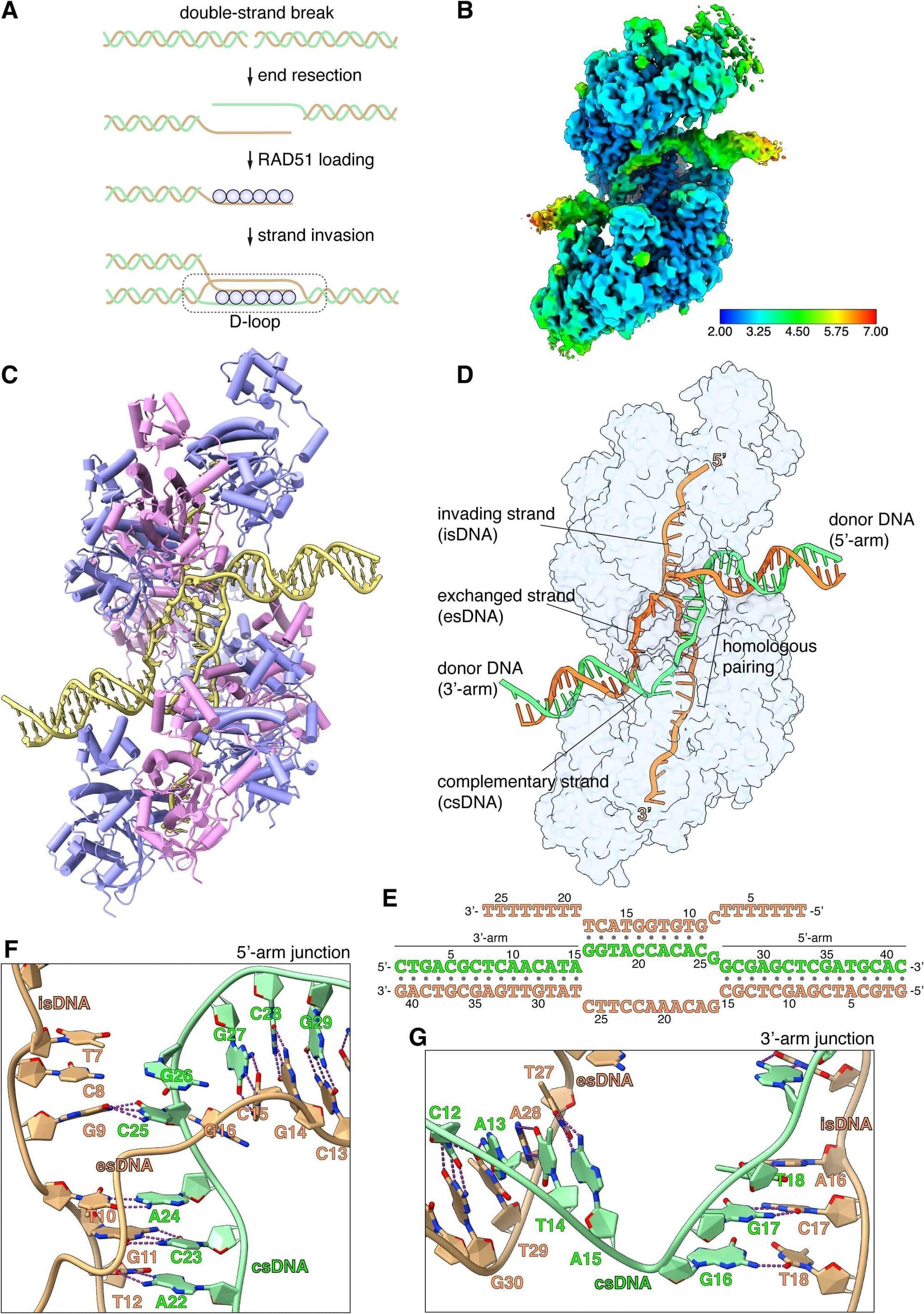Researchers have revealed the structural mechanisms of a major DNA repair pathway in human cells.
The research, published today as a Reviewed Preprint in eLife, is described by the editors as a landmark study with compelling evidence on how an important player in DNA repair—the RAD51 filament—promotes the exchange of strands between DNA molecules that contain homologous (identical or similar) sequences. They added that the findings will be very valuable for research communities studying DNA repair and genome stability.
Homologous recombination (HR) is one of the key DNA repair pathways in cells. It is essential for repairing double-stranded breaks in DNA and for DNA crossover events during sexual reproduction. Moreover, cells deficient in HR are more prone to cancer, and targeting the cells’ HR machinery—together with other DNA repair pathways—can be used to kill cancer cells (an approach called synthetic lethality).
